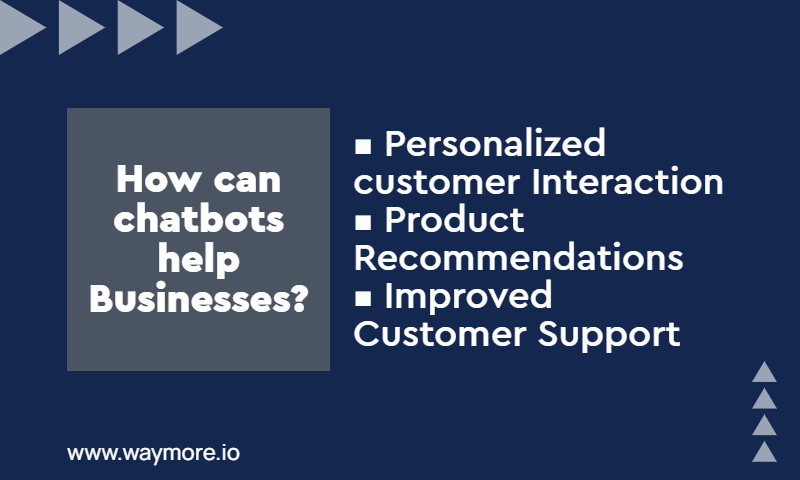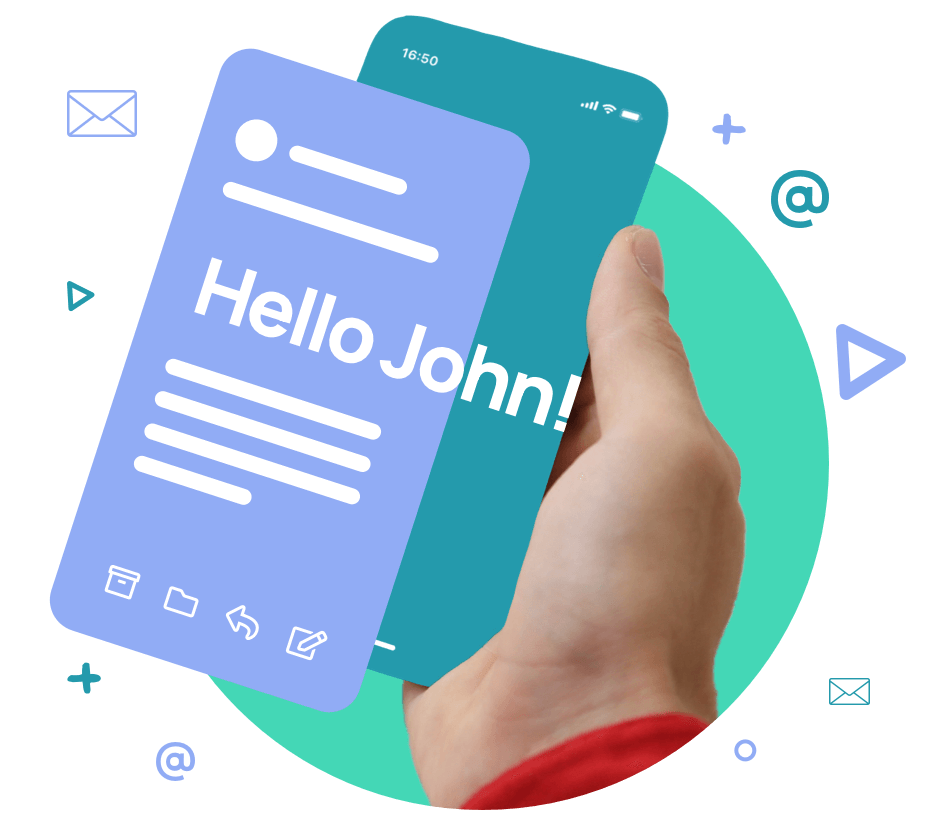Quick Links
What is an Ecommerce chatbot?
An ecommerce chatbot is a computer program that interacts with online shoppers in real time. It can provide customer service, answer questions, recommend products, and more.
An AI chatbot for ecommerce uses artificial intelligence to understand natural language and mimic human conversation. This way, it can offer personalized and engaging experiences to customers across different channels. AI chatbots for ecommerce can help online retailers increase sales, reduce costs, and improve customer satisfaction.
How NLP Enables AI Chatbots
Imagine a world where interacting with a computer feels as natural as chatting with a friend. That’s the promise of AI chatbots powered by Natural Language Processing (NLP). But how does NLP breathe life into these virtual assistants?
Understanding the Human Puzzle
NLP empowers chatbots to understand the complexities of human language. This involves:
- Intent Recognition: Deciphering the underlying meaning behind a user’s message, going beyond just keywords. It’s like understanding the “why” behind the “what”.
- Sentiment Analysis: Detecting the emotional tone of the user’s text, whether it’s frustration, joy, or confusion. This helps the chatbot tailor its responses accordingly.
- Entity Extraction: Identifying key players, places, and things mentioned in the conversation. Imagine a chatbot booking a flight – it needs to recognize “Paris” as a city and “July” as a month.
Building Blocks of a Conversation
NLP equips chatbots with the tools to engage in meaningful dialogue:
- Dialogue Management: Orchestrating the flow of conversation, remembering past interactions, and keeping the context alive. Think of it like planning a conversation roadmap.
- Natural Language Generation: Crafting human-like responses that are relevant, informative, and even humorous. No robotic “I understand” here!
- Machine Learning: Persistently learning and improving from user interactions, making the chatbot smarter and more adaptable over time. It’s like having a conversation that gets better with every message.
As NLP technology continues to evolve, we can expect even more sophisticated and engaging chatbot interactions. Advanced algorithms will enable chatbots to understand complex emotions, learn from each interaction, and adapt to individual communication styles. This opens the door for AI to have conversations that feel truly human, changing how we use technology every day.
How Ecommerce chatbot help your business?

AI-powered chatbots for retail are no longer futuristic concepts; they’re rapidly becoming essential tools for businesses of all sizes. Virtual assistants, with advanced natural language processing (NLP) and machine learning (ML), bring many benefits that lead to higher sales and improved customer experience (CX).
Personalized Customer Interactions
Imagine a customer browsing your website, greeted by a friendly AI assistant who understands their needs and preferences.
AI chatbots for personalized customer experiences can look at your past purchases, how you browse, and even your demographic information to suggest products you might like, provide special promotions, and answer questions in a natural, conversational way. This personalized approach fosters trust and engagement, leading to higher conversion rates and loyal customers.
Product Recommendations
Gone are the days of customers sifting through endless product pages. AI chatbots for cross-selling and upselling can leverage purchase history and real-time browsing data to suggest complementary items or upgraded versions, boosting average order value and driving sales. Imagine a customer looking at a pair of shoes; the chatbot could recommend matching accessories or suggest a premium model with additional features.
Seamless Checkout Processes
Abandoning carts is a major pain point for e-commerce businesses. AI chatbots can reach out to customers who left items in their cart, address concerns, provide discounts, and guide them to complete their purchase. This proactive approach minimizes cart abandonment and maximizes revenue potential.
Improved Customer Support
Peak hours can overwhelm traditional customer service channels, leaving customers frustrated and waiting. AI chatbots for sales and customer service can handle routine inquiries 24/7, freeing up human agents for complex issues. They can answer product questions, track orders, and even resolve basic returns or exchange requests, ensuring timely and efficient support that enhances customer satisfaction.
Lead Generation & Marketing Automation
Chatbots can qualify leads by asking targeted questions and gathering valuable data. They can also nurture leads with relevant information and offers, automating marketing efforts and driving sales.
Data-Driven Insights & Business Optimization
Chatbot interactions generate valuable data on customer behavior, preferences, and pain points. By analyzing this data, businesses can gain insights to improve product offerings, personalize marketing campaigns, and optimize the overall customer experience.
Efficient FAQ Handling & Self-Service
Chatbots can handle a vast majority of frequently asked questions, freeing up human agents for complex concerns. Customers can quickly find answers to basic inquiries, reducing wait times and support costs.
Conversion Optimization
Chatbots can identify customers who abandon their carts and engage them in conversational recovery. By addressing concerns and offering assistance, they can nudge hesitant buyers towards completing their purchase, boosting conversion rates.
Multilingual support
Chatbots can communicate in multiple languages, expanding your reach to a wider global audience.
Reduced Costs and Increased Efficiency
Implementing AI chatbots for reducing customer support costs in ecommerce is a strategic investment. Chatbots can handle a high volume of inquiries, reducing the need for human agents and lowering operational expenses. Additionally, 24/7 availability and faster resolution times lead to improved customer satisfaction, further boosting brand loyalty and potentially reducing churn.
How to Choose and Implement the Right AI chatbot?
With a plethora of AI chatbot options available, choosing the right one is crucial.
Identify your goals and needs
Before you start looking for an AI chatbot solution, you need to define what you want to achieve with it and what problems you want to solve. You also need to consider your target audience, your brand voice, and your budget.
Research the available options
Numerous AI chatbot platforms and tools populate the market, each boasting distinct features, capabilities, and pricing structures. Compare the options to find the AI chatbot platform that best fits your goals and needs. Some of the factors to consider are: the level of customization, the integration with your ecommerce platform and other tools, the quality of the natural language processing and understanding, the analytics and reporting, and the customer reviews and ratings.
Test and evaluate the chatbot
Before you launch your AI chatbot, you need to test it and make sure it works as expected. We can use tools like Chatbot Tester or Botmock to simulate conversations with your chatbot and check its performance, accuracy, and usability.
You can also ask for feedback from your team, your existing customers, or a focus group. You should look for any errors, bugs, or gaps in the chatbot’s functionality and fix them before going live.
Launch and promote the chatbot
After setting up your AI chatbot, you can use it on your online store and other places like social media, email, or messaging apps. You should also promote your chatbot and let your customers know about it and how it can help them. You can use banners, pop-ups, videos, or blog posts to introduce your chatbot and encourage customers to try it out.
Monitor and improve the chatbot
After launching your AI chatbot, you need to monitor its performance and measure its impact on your ecommerce business. You can use tools like Google Analytics or [Chatbase] to track metrics like engagement, retention, conversion, satisfaction, and revenue.
You should also collect feedback from your customers and analyze their behavior and preferences. Based on the data and insights, you can optimize your chatbot and make it more effective and user-friendly.
Ecommerce Chatbot Use Cases
Ecommerce chatbots are rapidly transforming the online shopping experience by providing 24/7 support, personalized recommendations, and a more engaging interaction for customers.
Customer Support & Engagement
- Answering FAQs: Chatbots can handle basic inquiries about products, orders, shipping, and returns, freeing up human agents for complex issues.
- Live chat integration: Offer seamless transition to human agents when needed, ensuring customer satisfaction.
- Proactive outreach: Engage customers with relevant product suggestions, abandoned cart reminders, and personalized offers.
Product Discovery & Purchase
- Product search & recommendations: Guide customers to the right products based on their preferences, search history, and browsing behavior.
- Gift suggestions: Assist customers in finding the perfect gifts for different occasions and recipients.
- Upselling & cross-selling: Recommend complementary products based on the customer’s cart or purchase history, increasing average order value.
Personalization & Loyalty
- Greeting & addressing by name: Create a more welcoming and personalized experience for returning customers.
- Purchase history & preferences: Utilize purchase data to suggest relevant products and offers, enhancing customer loyalty.
- Feedback & reviews: Gather customer feedback through interactive surveys and reviews, improving product offerings and customer satisfaction.
Omnichannel Commerce Chatbot
In today’s digital landscape, customers expect a seamless and personalized shopping experience, regardless of the channel they use. Enter the omnichannel commerce chatbot, a powerful tool that empowers businesses to connect with customers anywhere, anytime, on their preferred platforms.
Imagine a virtual store assistant available 24/7 across your website, mobile app, messaging platforms like WhatsApp, and even in-store kiosks. That’s the essence of an omnichannel chatbot. It leverages AI and natural language processing (NLP) to understand customer queries, provide product recommendations, answer questions, facilitate transactions, and personalize the shopping journey.
Key Features of Omnichannel Commerce Chatbots
- Multi-platform Integration: Connect seamlessly across various channels like websites, mobile apps, messaging platforms, and even physical stores.
- AI-powered Language Processing: Understand natural language, interpret customer intent, and respond accurately and efficiently.
- Personalized Recommendations: Utilize customer data to suggest relevant products, promotions, and offers, enhancing engagement.
- Contextual Awareness: Maintain conversation flow and remember past interactions for a natural and personalized experience.
- Payment Processing: Facilitate secure transactions within the chatbot interface for a seamless buying journey.
- Integrations: Connect with CRM systems, inventory management, and other business tools for comprehensive data analysis.
Future of AI Chatbots in Ecommerce
In e-commerce, AI chatbots have significantly advanced, but unlocking their true potential is still pending. Here’s a glimpse into what the future holds
Deeper Personalization & Emotional Intelligence:
- Chatbots will go beyond basic product recommendations, understanding individual preferences, purchase history, and even emotions.
- They’ll adapt communication styles, offer emotional support, and build trust through empathy.
- Imagine a chatbot that remembers your past purchases, suggests similar items you might genuinely like, and even cheers you up after a return.
Voice Commerce & Conversational Interfaces
- Voice-powered chatbots will become commonplace, allowing for natural, hands-free interactions while shopping.
- Integration of visual interfaces like AR/VR will enable virtual try-ons, product demonstrations, and immersive shopping experiences.
- Imagine asking your smart speaker for recommendations, trying on clothes virtually, and completing your purchase with voice commands.
Conversational Marketing and Lead Generation
- Businesses can use chatbots to capture leads and qualify potential customers through engaging conversations.
- They can answer questions about products and services, collect customer information, and even schedule appointments with sales representatives. This can be a powerful tool for generating high-quality leads and boosting conversion rates.
Proactive Engagement & Predictive Analytics
- Chatbots will anticipate customer needs, proactively suggesting relevant products, offers, and support before issues arise.
- Predictive analytics will enable them to identify at-risk customers and offer personalized interventions to improve retention.
- Imagine a chatbot reminding you about an abandoned cart, suggesting size recommendations based on your body type, or even offering early access to sales based on your purchase history.
Ethical Considerations & Transparency
- As AI chatbots become more sophisticated, ethical considerations like data privacy, bias, and transparency will be crucial.
- Users will ask for clear explanations on how chatbots collect and use data, and how they decide what to say.
- Building trust and ensuring responsible AI development will be paramount for widespread adoption.
Challenges and Considerations
It’s important to acknowledge that challenges remain in the development and implementation of advanced AI chatbots. These include:
- Ensuring natural and engaging conversation: Chatbots should avoid sounding robotic and impersonal.
- Handling complex inquiries and emotional situations: Chatbots need to be able to understand and respond to diverse customer needs and emotions.
- Chatbots must handle user data collected responsibly and ethically to address data privacy and security concerns.
Case Studies: Real-World Success Stories

The power of AI chatbots isn’t just theoretical.
- Sephora saw a 11% increase in average order value through personalized product recommendations via its chatbot.
- Tommy Hilfiger’s chatbot reduced customer support costs by 30%.
- H&M’s chatbot improved customer satisfaction scores by 5%.
- Pizza Hut: Their chatbot “HutBot” increased repeat purchase orders by 60%, demonstrating the power of personalized recommendations.
These success stories demonstrate the tangible impact of AI chatbots on e-commerce businesses.
Conclusion
In conclusion, AI chatbots for ecommerce are not just a trend; they’re a powerful tool for driving sales, enhancing CX, and staying ahead of the curve in the competitive online marketplace.
Boost sales through personalized product recommendations and guided shopping experiences.
E-commerce businesses can succeed in the digital world by using AI technology and the right chatbot solution.
If you want to learn more, reach out to the experts at WayMore today.




